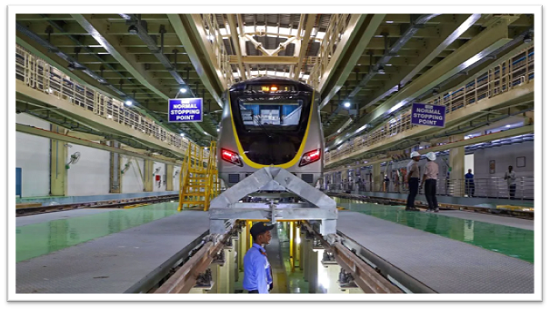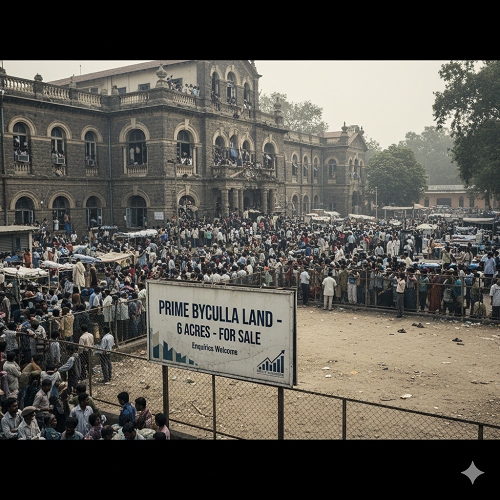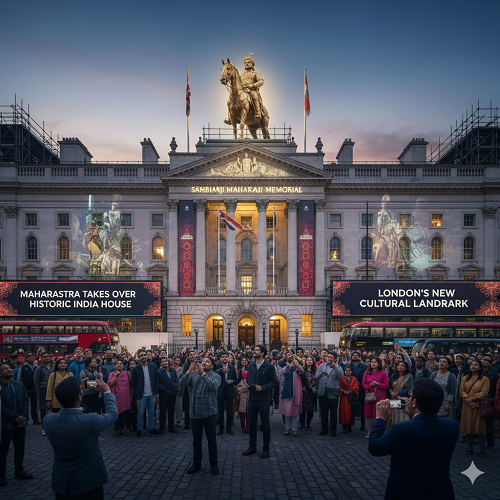
Inside Mumbai’s Mandale Metro Depot: MMRDA’s Mega Facility Set to Redefine Urban Mobility in Asia
Mumbai’s transit transformation continues to accelerate, and the latest insights from the Mumbai Metropolitan Region Development Authority (MMRDA) underline just how ambitious the city’s next mobility chapter is becoming. The authority recently shared detailed updates on the Mandale Metro Depot in Mankhurd, positioning it not just as a support system for Metro Line 2B but as a landmark infrastructure asset for Asia. For a city where mobility has been both a constraint and catalyst, the Mandale Depot signals a shift toward scale-driven, technology-enabled public transport.
Spread across 32 hectares and designed to accommodate 72 metro rakes on two levels, the facility is being described as the largest and most advanced metro depot in Asia. Its operational, technological, and environmental architecture reflects a deliberate effort to build long-term capacity for Mumbai’s expanding metro network. As the city prepares for a new era of high-frequency, multi-line connectivity, the Mandale Depot is emerging as a critical component of that future.
A Strategic Backbone for Metro Line 2B
The Mandale Depot has been developed to service the 23.6-km elevated Metro Line 2B, which will connect DN Nagar in the western suburbs to Mandale in Mankhurd. This corridor is designed to bridge the longstanding east–west divide in daily commuting patterns. With a two-tier structure capable of managing 72 rakes, the depot provides the scale required for high-volume operations across one of Mumbai’s most important upcoming lines.
This marks the first time Mumbai is constructing an elevated metro depot and doing so at a size unmatched elsewhere in Asia. The scale reflects both necessity and foresight: Line 2B will eventually integrate with the broader metro ecosystem and requires a support facility that ensures reliability within a congested and fast-growing urban region.
Technology at the Core: The G+3 Depot Control Centre
MMRDA’s updates highlight the depot’s operational nerve center, a G plus 3 Depot Control Centre designed to function round the clock. This facility will monitor train movement, oversee preventive and corrective maintenance schedules, and supervise safety systems in real time. In modern metro systems, such centralized digital command hubs are the difference between punctuality as an aspiration and punctuality as a guarantee.
Continuous technological surveillance, predictive maintenance tools, and real-time system diagnostics will help improve service reliability. For Mumbai, where rail-based mobility remains the backbone of the city, a high-tech operations centre is essential to reducing service disruptions and enhancing commuter trust.
Sustainability and Efficiency Built into the Design
The Mandale Depot incorporates environmental systems that reflect global best practices. A 175-kilolitre-per-day effluent and sewage treatment facility will recycle water used for train washing, landscaping, and other operational needs. This circular water-use model is especially critical in a city where water demand often outpaces supply.
MMRDA has also installed noise and dust suppression systems to reduce environmental impact on surrounding residential areas. These measures acknowledge the sensitivity of building a large-scale transit facility within a densely populated urban zone. More than 100 kilometres of underground utilities run beneath the depot, streamlining power, communication, signalling, and water systems to support seamless operations.
Engineering Complexity: Turning Constraints into Innovations
Constructing Asia’s largest metro depot in a coastal, densely populated region presented formidable engineering challenges. Coastal soil conditions required advanced foundation work, and the project demanded the development of a new access road capable of handling heavy construction vehicles. The double-decker depot design reflects the city’s limited land availability and showcases the importance of vertical infrastructure in urban mobility planning.
MMRDA described each engineering hurdle as an opportunity to introduce innovative solutions. Whether improving load-bearing designs, optimizing space for rakes, or managing construction logistics within a constrained footprint, the Mandale Depot stands as an example of infrastructure that blends ambition with adaptability.
India’s Longest Metro Test Track
Among the facility’s major highlights is India’s longest metro test track, stretching 965 metres. This track will enable speed testing, braking trials, system calibration, and safety validation before rakes are deployed for daily passenger operations. Efficient testing infrastructure reduces delays in rolling stock induction and strengthens the reliability of new trains entering service.
The depot also includes four shunting necks and an elevated neck, enabling smoother rake movement and better handling capacity during peak operational hours. For a line projected to eventually carry lakhs of passengers daily, such operational flexibility is essential.
Building Public Ownership Around Transit Infrastructure
MMRDA’s social media outreach, referring to Mandale as “The People’s Depot,” signals an emerging shift in how large public projects are communicated. By inviting residents to choose what impresses them most, scale, technology, or sustainability, the agency is attempting to foster a sense of civic ownership. Public sentiment plays an increasingly important role in the success of transport systems, influencing both ridership and long-term support for infrastructure projects.
A Pivotal Addition to Mumbai’s Metro Network
Mumbai currently has two operational metro depots: one in Charkop supporting Lines 2A and 7 (with a 22-rake capacity) and another in Andheri for Metro Line 1 (Versova–Ghatkopar). The Mandale Depot’s significantly larger footprint and advanced ecosystem will dramatically increase the city’s ability to manage and expand high-frequency metro operations.
With the city preparing for multiple new lines over the next decade, the Mandale Depot is poised to anchor the next phase of Mumbai’s transportation upgrades. Its combination of scale, technology, and sustainability sets a new benchmark for metro infrastructure not just in India but across Asia.




